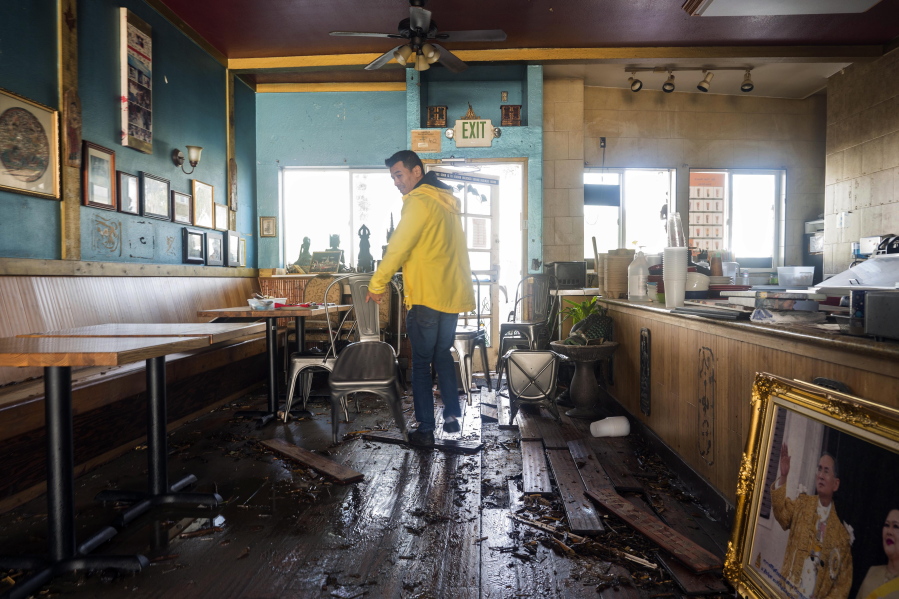CAPITOLA, Calif. (AP) — California weather calmed Friday but the lull was expected to be brief as more Pacific storms lined up to blast into the state, where successive powerful weather systems have knocked out power to thousands, battered the coastline, flooded streets, toppled trees and caused at least six deaths.
Remnant showers from the latest storm, a “bomb cyclone,” fell around the state and dangerous surf pounded the coast despite declining wave heights, while some areas enjoyed sunshine.
The next round of severe weather was predicted to arrive in Northern California on Friday night and spread south into the central region during the weekend, increasing flooding concerns due to already saturated soil. Heavy snow was forecast for the Sierra Nevada.
“A very active weather pattern across the Pacific Ocean will continue to push energetic and fast-moving low pressure systems toward the West Coast,” the National Weather Service said. “California continues to take the brunt of the heavy precipitation and strong winds associated with these systems as we head into the first full weekend of 2023.”
During the weekend, “the next moisture-laden Pacific cyclone is forecast to approach California with the next onslaught of heavy rain,” the service said.
The storms are atmospheric rivers, long plumes of moisture stretching far out into the Pacific, and capable of dropping staggering amounts of rain and snow.
Downtown San Francisco had its wettest 10-day period since 1871 between Dec. 26 and Jan. 4 when 10.33 inches (26.24 centimeters) of rain fell. The all-time 10-day record was 14.37 inches (36.5 cm) in January 1862.
The storms have also been piling up much-needed snow in the drought-stricken state’s mountains, where the snowpack supplies about a third of California’s water supply.
“It has been a deep week with almost 5 FEET of snow (57.9 inches, 147 cm) falling in the last 7 days!” the UC Berkeley Central Sierra Snow Lab tweeted Friday.
The statewide snowpack was 191% of normal to date and 76% of the April 1 average, which is usually the peak, according to the California Department of Water Resources.
Storms have been arriving in California since early November. A powerful New Year’s weekend storm that caused extensive flooding in Northern California’s Sacramento County and four deaths was followed on Wednesday and Thursday by a “bomb cyclone,” a shorthand reference to a storm intensified by a rapid plunge in air pressure through a process called bombogenesis.
Two deaths were reported, including a 2-year-old boy killed when a redwood fell on a mobile home.
The seaside village of Capitola in Santa Cruz County about 60 miles (100 kilometers) south of San Francisco suffered possibly the worst damage as waves that were forecast to top 25 feet (7.6 meters) crashed into homes and restaurants at the mouth of Soquel Creek and knocked out a section of its historic wooden pier.
Hurricane-strength gusts as high as 101 mph (162 kph) toppled trees onto buildings and roads, knocked out power lines and blew down the roof on a gas station in South San Francisco.
National Weather Service meteorologist Warren Blier said the wind speed recorded on a Marin County hilltop was among the highest he could recall in a 25-year career.
The storms won’t be enough to officially end the state’s ongoing drought, now entering its fourth year, but they have helped. Not including the latest deluge, recent storms moved parts of the state out of the “exceptional drought” category in the U.S. Drought Monitor. Most of the state, though, remains in the extreme or severe drought categories.



